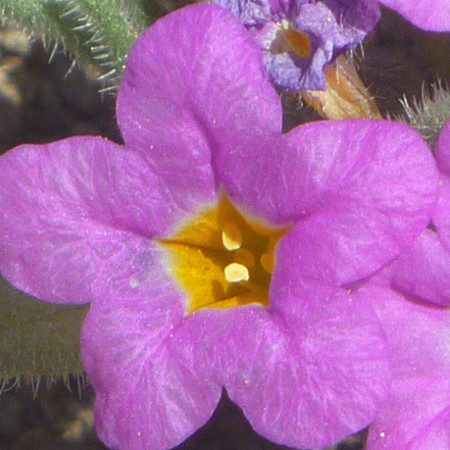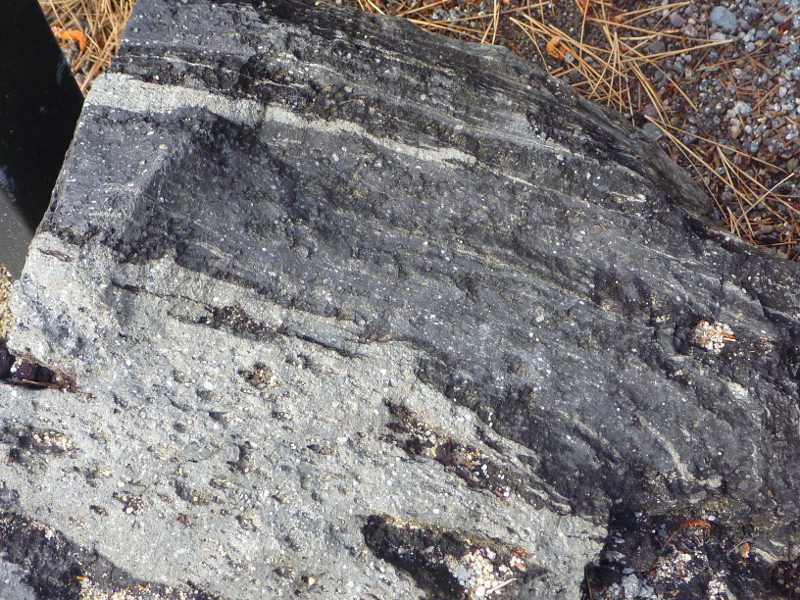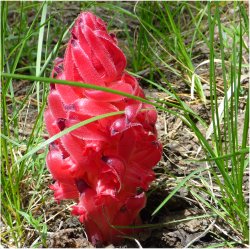
Banded pumice displayed at an interpretive
exhibit of the Devasted Area Trail
This rock of banded pumice is
displayed next
to the Devastated Area Interpretive Trail in
Lassen Volcanic National Park, California.
The exhibit panel is entitled
“New Rocks, Old Rocks.”
The “new rocks ” include this
banded pumice as well as
light dacite pumice
and
black dacite, which all formed
during eruptions of
Lassen Peak
in 1915. The panel explains:
Banded pumice, formed May 22, 1915, by the simultaneous eruption and mixing of two magmas of different composition—light dacite and dark andesite. Light dacit pumice is banded pumice, without the dark andesite banding.
Andesite has a lower silica content than dacite and is typically gray or black in color. Banding occurs when magmas of different type—different composition and hence different viscosity—mix incompletely. The magma-mixing processes that produced the types of rocks, which erupted at Lassen Peak in 1915, can be explained by integrating their volcanologic information with data derived from their chemical and mineralogical analysis [DOI: 10.1093/petroj/40.1.105].







